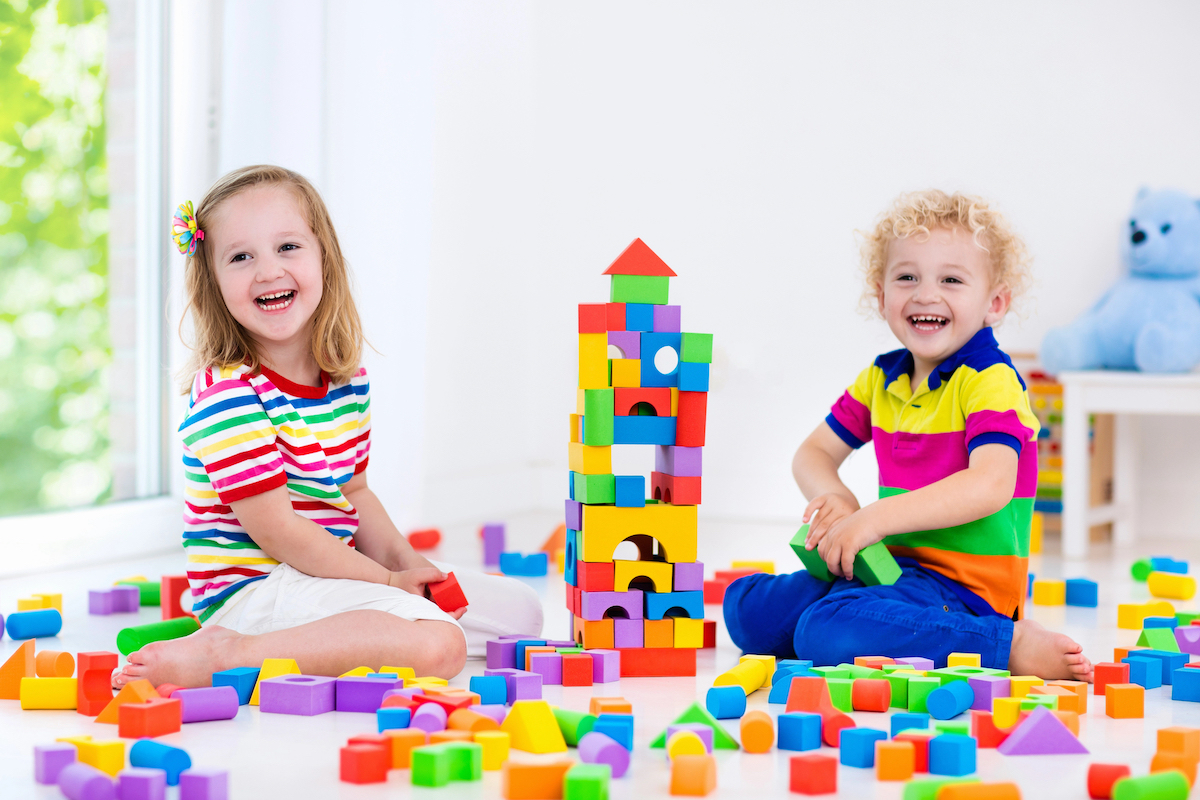Winter can feel like a long stretch when the kids are home, the days are cold, and you’ve run out of ways to keep everyone busy. If you’re staring down the barrel of rainy days and stir-crazy little people, don’t stress, we’ve done the thinking for you.
Introducing your go-to list of 50 simple, fun and screen-free activities to keep your kids engaged, entertained, and maybe even learning a little along the way. Print it, stick it to the fridge, and tick them off one by one. This is your secret weapon to turning winter into a season of joy, discovery, and connection.
How to Use This List
- Tailor to Age: Activities are suitable across a range of ages but can easily be modified for toddlers to tweens. If something feels too advanced or too simple, simply scale it up or down to suit your child’s abilities and interests.
- Create a Challenge: How many can your family tick off before school starts? Turn it into a friendly competition or a cooperative mission to complete them all.
- Make it Educational: Many activities also build creativity, fine motor skills, resilience, and independence. Look for natural opportunities to turn fun into learning by asking questions or encouraging experimentation.
- Track the Fun: Snap photos and create a memory wall or scrapbook. This way, you not only keep track of what you’ve done but also build a lasting memento of your time together.
Indoor Fun (Because, let’s face it, winter!)
- Bake something together – It’s more than just a sweet treat! Baking teaches children valuable life skills like measuring, sequencing, and timing. They’ll also build their numeracy skills through ingredient quantities and fractions, while following recipes supports reading and comprehension.
- Build a blanket cubby house – Transforming a pile of cushions and blankets into a secret fortress stimulates spatial awareness, planning, and imaginative thinking. It’s a mini engineering project disguised as fun.
- Movie marathon day – Watching movies as a family promotes bonding, but it also helps children develop emotional intelligence by connecting with characters and understanding story arcs. Make your own popcorn for an added sensory experience.
- Write and illustrate a short story – This sparks creativity while reinforcing literacy skills. Encourage your child to dream up characters and adventures, helping with spelling, sentence structure, and expressive writing.
- Play board games – Classic games build patience, strategic thinking, problem-solving and teach how to win—and lose—gracefully. Designing your own game adds a creative and inventive twist.
- Paint a masterpiece – Art projects stimulate imagination and emotional expression while strengthening fine motor control and decision-making. Display their art to boost their confidence.
- Make sock puppets and put on a puppet show – Crafting puppets enhances dexterity and encourages storytelling, collaboration, and public speaking skills.
- Play hide and seek – An oldie but a goodie, this game promotes spatial awareness, memory, and the joy of surprise. It’s also a fantastic way to keep kids moving indoors.
- Paper plane contest – Folding and testing paper planes introduces kids to basic aerodynamics, experimentation, and iterative problem-solving, all wrapped up in play.
- Read aloud or listen to audiobooks – Reading builds vocabulary, listening skills, comprehension, and empathy. Let them act out scenes or draw what they hear to deepen engagement.
- Play Sudoku or logic puzzles – These brain teasers help improve pattern recognition, logical reasoning, patience, and critical thinking.
- Make your own playdough – Homemade playdough is a sensory-rich activity that develops fine motor skills, creativity, and an understanding of cause and effect through mixing ingredients.
- Do a jigsaw puzzle – Completing puzzles strengthens concentration, spatial reasoning, and persistence. It’s a great quiet-time activity that promotes mindfulness.
- Put on some music and make up a dance – Dancing improves coordination, rhythm, body awareness, and confidence. Let your kids choreograph a routine for extra fun.
- Paper mache creations – A tactile way to build patience, planning, and hand strength. Creating 3D models also introduces early sculptural concepts.
- Write a letter to a friend or relative – Encourages literacy, emotional expression, and teaches the importance of keeping in touch. A reply in the mailbox is a bonus!
- Colour in together – It may seem simple, but colouring supports hand control, colour recognition, and mindfulness. Great for winding down before bedtime.
- Play balloon volleyball – This energetic game improves coordination, reaction speed, and teamwork, and it’s safe for inside play.
- Make an indoor obstacle course – Channel their energy and build physical confidence, planning, and motor sequencing as they crawl, jump, and climb.
- Play Solitaire or card games – Card games like Solitaire improve focus, memory, and strategic thinking, and provide opportunities for solo quiet play.
- Learn a magic trick and put on a show – Performing magic builds confidence, hand-eye coordination, sequencing, and presentation skills.
- Make your own jewellery using beads and string – Stringing beads enhances fine motor development, pattern recognition, and creativity.
- Draw a dream house or superhero – Drawing encourages imagination, storytelling, and visual planning. Add speech bubbles to turn it into a comic!
- Make costumes and put on a play – Dress-up play supports language development, empathy, confidence, and creativity through role-play.
- Learn origami – Folding paper into intricate shapes teaches patience, geometry, precision, and concentration.
- Write a poem or song – Playing with words builds rhythm, expression, language fluency, and can help children explore and process their feelings.
Outdoor Adventures (Rug up and get out there!)
- Plant a veggie or herb garden – Gardening teaches biology, responsibility, and sustainability. Watching something grow instils a sense of patience and accomplishment.
- Build a backyard cubby – Whether it’s sticks, boxes or tents, cubby building enhances creativity, physical coordination, and teamwork.
- Wash the car together – This hands-on job teaches responsibility, physical coordination, and attention to detail. Plus, they’ll love splashing with water.
- Go on a bug hunt – Observing insects fosters curiosity, respect for nature, and early science inquiry. Take a magnifying glass and notebook!
- Create chalk art on the driveway – Chalk drawing allows for large-scale creativity, encourages artistic confidence, and washes away easily for repeat fun.
- Make mud pies – Messy play like this develops sensory awareness, imagination, and encourages children to embrace nature without fear of getting dirty.
- Have a water balloon fight – Great for building hand-eye coordination, social interaction, and active movement—even on cold days with a raincoat!
- Play hide and seek in the yard – The thrill of the chase continues outdoors, expanding spatial reasoning and awareness.
- Go on a nature scavenger hunt – Searching for leaves, flowers, or feathers enhances observation, categorisation, and mindfulness in nature.
- Pack a picnic and eat outdoors – Planning and packing meals teaches life skills and creates a change of scene that boosts mood and family connection.
- Backyard camping – Pitch a tent and experience an adventure from home. It fosters independence, resilience, and problem-solving.
- Play ball games – Kicking or throwing a ball improves motor coordination, agility, and communication.
- Set up an obstacle course – Using ropes, cones or toys, challenge their agility, speed, and problem-solving in a playful way.
- Throw a frisbee – Simple but effective for honing aim, timing, and cooperation.
- Go for a bike or scooter ride – Boosts endurance, balance, confidence, and road awareness.
- Make bubble mixture and blow giant bubbles – Kids learn about air pressure and surface tension while chasing shimmering spheres of fun.
- Play hopscotch – This playground classic builds coordination, number recognition, balance, and memory.
- Jump rope – A great cardio workout that improves timing, rhythm, and perseverance.
- Water play with buckets and toys – Pouring and measuring help with early maths and motor planning, while the water calms the senses.
- Make daisy or dandelion chains – Encourages delicate fine motor skill development and appreciation for natural materials.
- Build sandcastles – Shaping and moulding sand boosts spatial awareness, hand strength, and creative thinking.
- Run through the sprinkler – Active and invigorating, this boosts confidence, body control, and joy.
- Have a running race or play chasey – Improves cardiovascular fitness, builds sportsmanship, and burns off energy.
- Make and fly a kite – Teaches resilience, patience, basic weather science, and gives an enormous sense of achievement.
Final Thoughts
These ideas are designed to make winter days warmer with laughter, learning, and love. Not every moment has to be structured—but having a ready list of go-to ideas can turn cabin fever into creativity.
Whether you complete five or all fifty, know that the time you spend playing and engaging with your child is time that enriches their development and deepens your bond. Let this be a season of joyful memories, learning through play, and simple moments that become treasured family stories.
Here’s to a fun-filled, connected, and cozy winter break!
Final Thoughts
These moments of fun, creativity and connection are more than just holiday time-fillers. They are the ingredients of childhood memories, the spark for young imaginations, and the anchors of family bonding.
By making time to play, explore and create—even in the heart of winter—you’re giving your children something much bigger than a way to pass the time. You’re giving them stories they’ll tell one day, skills they’ll keep for life, and the joy of being fully present with the people who matter most.
So, grab a hot drink, warm socks, and dive into a winter that your family will look back on fondly. Let the school holidays be a time to laugh, create, move, and most importantly, be present with each other.









